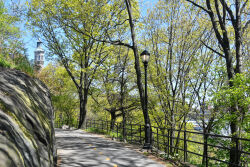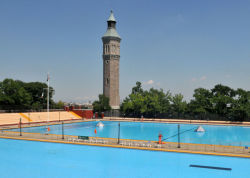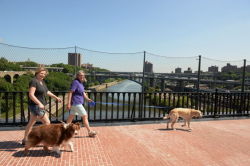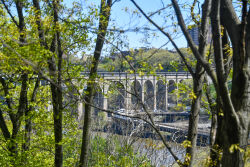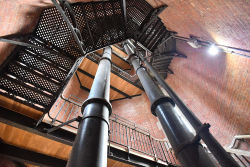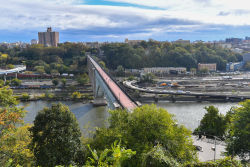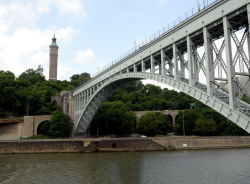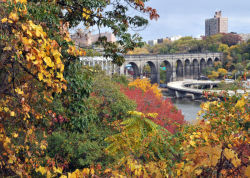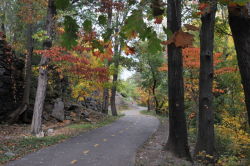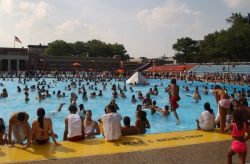Highbridge Park
Coogan's Bluff
Coogan’s Bluff, a large cliff extending northward from 155th Street in Manhattan, once was the site of the fabled Polo Grounds, the home of the New York Giants (baseball), and the first home of the New York Mets. It sits atop a steep escarpment that descends 175 feet to the Harlem River Valley below. In 1891, John T. Brush (1845-1912), the Giants’s owner, bought the land for the stadium from James J. Coogan (1845-1915), a real estate merchant and Manhattan Borough President (1899-1901).
The Giants originally played in a polo field on 111th Street between Fifth and Sixth Avenues. Brush kept the name, Polo Grounds, when he moved the team to Coogan’s Bluff in 1891. In April 1911, the Polo Grounds, an elaborate wooden structure, burned to the ground. By October, the Giants were hosting the Philadelphia Athletics for the 1911 World Series in a rebuilt stadium of concrete and steel. The new Polo Grounds boasted box seats of Italian marble, ornamental American eagles on the balustrade, and blue and gold banners, 30 feet apart, flying from a cantilever roof. At the time, it was the premier Major League Baseball stadium.
Baseball soon established itself as the quintessential American game, and the New York Giants made significant contributions to 20th century baseball lore. Mel Ott (1909-1958) and Willie Mays (b.1931) are thought to be among the finest players of all time; and the names of Christy Mathewson (1878-1925) and Carl Hubbell (1903-1988) are still mentioned whenever great pitchers are discussed. The Giants also provided baseball with one of its most dramatic moments: “the shot heard round the world.” In 1951, the Giants and their arch-rivals the Brooklyn Dodgers were in the ninth inning of the deciding game in a play-off to determine the National League pennant winner. With two outs left in the game, the Dodgers were ahead 4-2 when Bobby Thomson came to bat for the Giants and hit a 3-run home run winning the game for the Giants, and making baseball history.
In 1957, the owner of the Giants, Horace Stoneham (1903-1990) broke many New York hearts when he announced that he was moving the Giants to San Francisco. The Polo Grounds remained for seven more years, serving as home to the New York Mets for the 1962 and 1963 seasons. In 1964 the stadium was demolished and now the Polo Grounds Towers, a housing project, occupies the site. All that is left of the original Polo Grounds is an old staircase on the side of the cliff that once led to the ticket booth.
Today, Coogan’s Bluff is part of Highbridge Park, which was assembled piecemeal between 1867 and the 1960s, with the bulk being acquired through condemnation from 1895 to 1901. The cliffside area from West 181st Street to Dyckman Street was acquired in 1902, and the parcel including Fort George Hill was acquired in 1928. The park extends from 155th Street in North Harlem to Dyckman Street in Washington Heights/Inwood. The Friends of Highbridge Park are involved in preserving the park's history and the New York Restoration Project has cleaned the park and restored its trails.
Check out your park's Vital Signs
Clean & Safe
Green & Resilient
Empowered & Engaged Users
Share your feedback or learn more about how this park is part of a
Vital Park System

